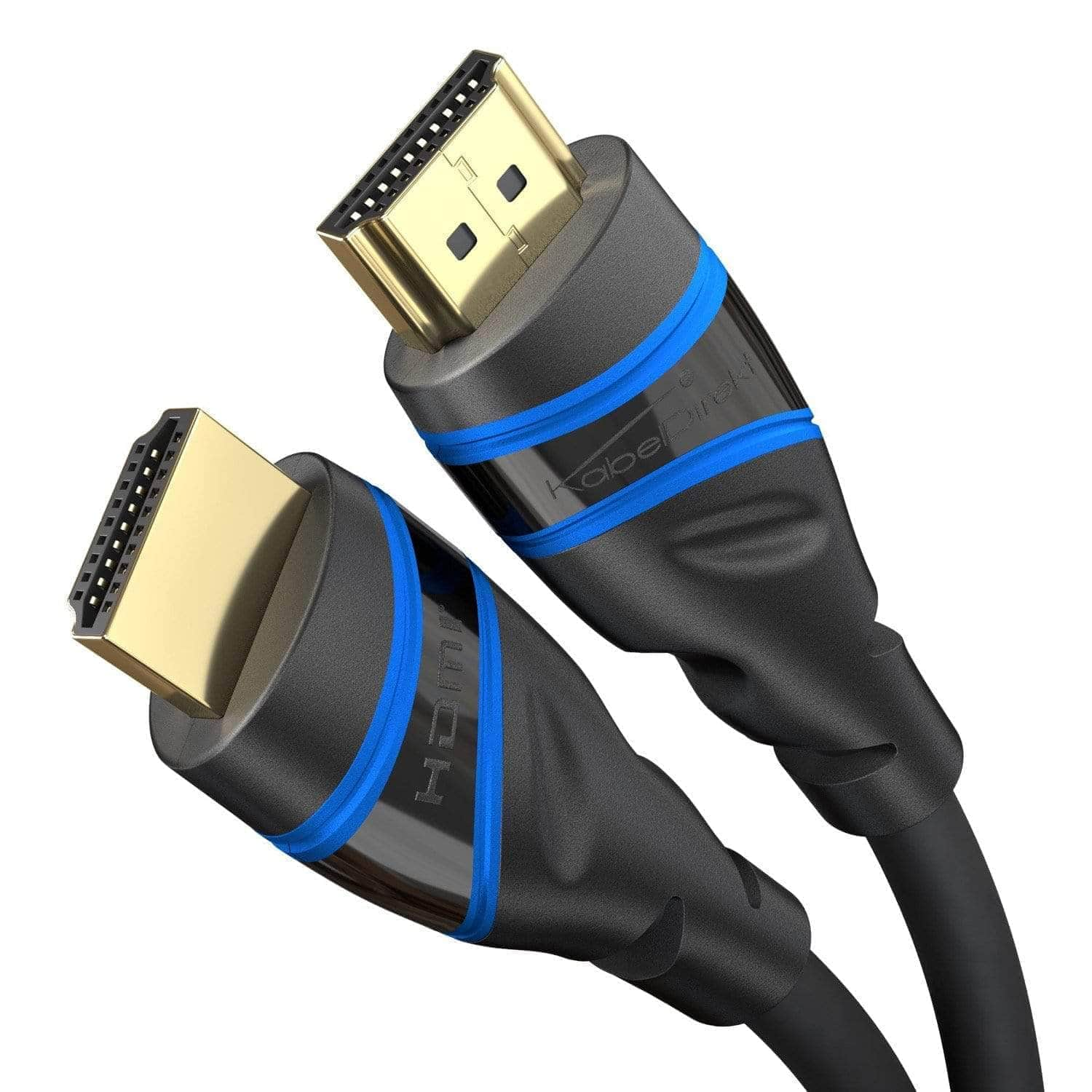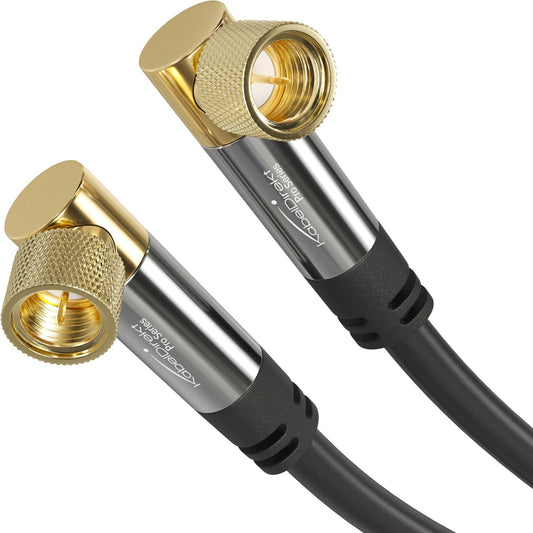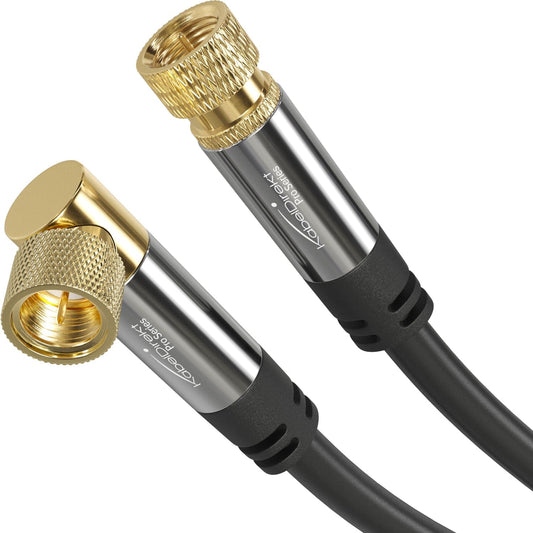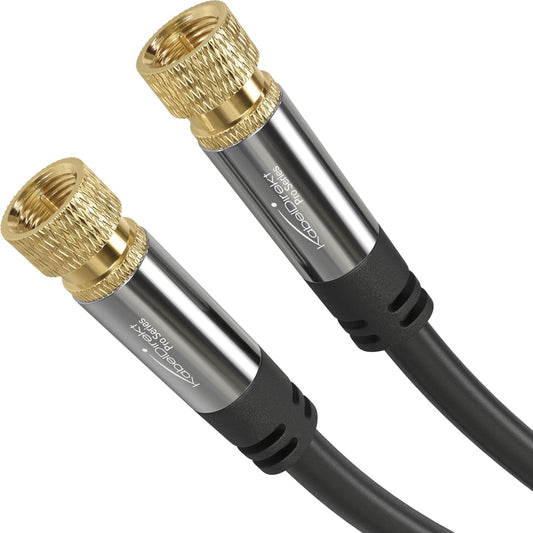-
{# Optional: Hier war bei dir ein zusätzlicher Titelblock; den habe ich entfernt, damit der Titel nur einmal erscheint. #}
-
{# Optional: Hier war bei dir ein zusätzlicher Titelblock; den habe ich entfernt, damit der Titel nur einmal erscheint. #}
-
{# Optional: Hier war bei dir ein zusätzlicher Titelblock; den habe ich entfernt, damit der Titel nur einmal erscheint. #}
-
{# Optional: Hier war bei dir ein zusätzlicher Titelblock; den habe ich entfernt, damit der Titel nur einmal erscheint. #}
Collection: Coaxial cables
Satellite cables for TV and radio
If you want to enjoy television and radio in the highest quality, you not only need a high-res TV but also a high-spec audio system and a receiver. The cables you use also play an important role. Without proper connections between the source (e.g. satellite dish, antenna, or cable TV outlet) and the output device, you won’t be able to enjoy flawless TV or radio. This is where our satellite cables come into play. But don’t let the name confuse you: The cables are not necessarily only aimed at people who receive TV and radio via satellite (DVB-S).
What are satellite cables?
Satellite cables are coaxial cables. They are two pole and have a concentric structure, meaning that the outer conductor always surrounds the inner conductor at a constant distance, i.e. everything is symmetrical. The main conductor is made of copper and carries the signal from the satellite dish, antenna, or broadband cable network to the receiver.
However, satellite cables differ not only on the inside – they also have a different connector compared to aerial cables: F connectors, which have a screw collar. If you have a satellite or cable TV outlet at home, chances are that only F connector satellite cables will fit the wall outlet.
It depends on the connector
There are different types of F connector, with both straight and right-angled versions. That’s why we stock a range of satellite cables with different connector combinations:
In addition to the three regular satellite cables, we also offer a type of adapter cable that has an F and a coax connector – like the one on an aerial cable. This is perfect for connecting equipment with an F socket to a wall outlet with coax sockets.
FAQs about satellite cables
Which satellite cable do I need?
If you have a wall outlet with threaded F sockets, you can theoretically use any of our three satellite cables with two F connectors. Whether you should go for a cable with one or two angled connectors hasn’t really got anything to do with technical circumstances – an angled connector has the advantage in that you can route the cable along the side of the wall or your television shelf. So if there’s any furniture directly in front of the wall on which the outlet is located or your TV is hanging directly on the wall, a cable with angled connectors makes sense because it takes up less space.
How long can a satellite cable be?
There’s no simple answer, as a 30-metre cable can perform just as well as a 2-metre one. What is important is the quality of the cable. If the shielding is good, it doesn’t matter if it’s a longer cable. In our shop you can get satellite cables up to 30 metres in length.
Is an aerial cable the same as a satellite cable?
Both are very similar and in theory serve the same purpose. Their designations don’t indicate which type of reception they are suitable for. A satellite cable can also be used when you receive TV and radio signals via DVB-T or DVB-C. Conversely, an aerial cable is also suitable for satellite TV. The question of what type of cable you need depends primarily on what connections your wall outlet has. If it has an F socket, you’ll need satellite cables with F connectors.
If I want to receive satellite TV, which sockets do I need to connect the satellite cable to?
To receive satellite TV, connect your satellite cable to the socket on your wall outlet, which will have a corresponding thread and is often labelled “SAT”.
How to connect satellite cable?
There’s a good reason why satellite cables have a screw collar. It’s because you don’t simply plug them in – you have to screw them on. This is the only way to ensure that the signal is transmitted correctly.
Which satellite cable do I need for Ultra HD?
All of our satellite cables are suitable for receiving 4K television. Basically, the cable does not play a role here. If you want to receive UHD TV, you’ll need a suitable receiver and TV, plus you’ll also need to subscribe to a service as 4K channels are usually not available for free.

HDMI Cables
We offer HDMI cables in all versions, lengths, and materials. Our products are engineered in Germany and manufactured worldwide in licensed facilities.





